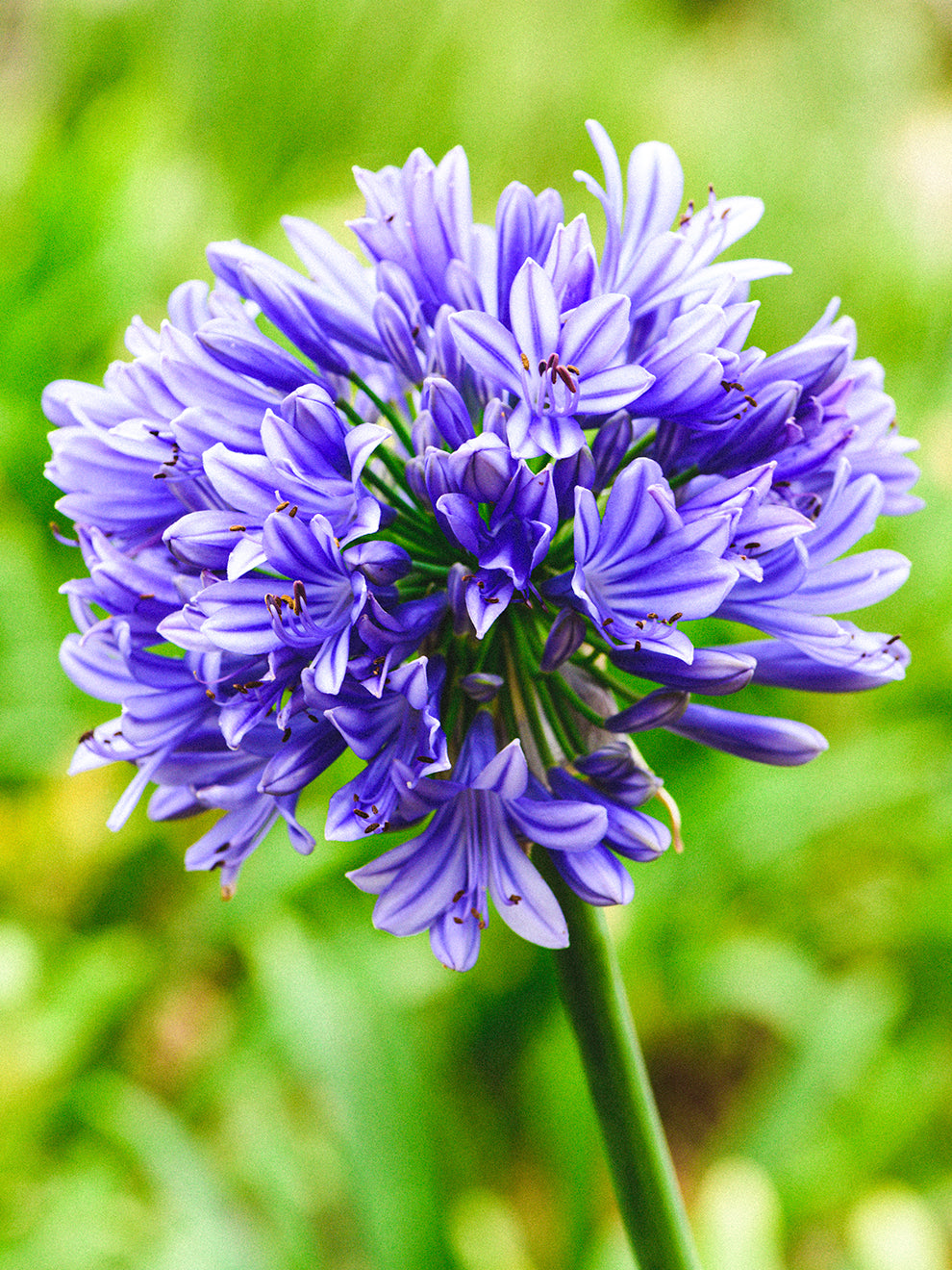Agapanthus Friend Plant Kingdoms: Perfect Pairings for Your Garden
Agapanthus Friend Plant Kingdoms: Perfect Pairings for Your Garden
Blog Article
Grasping the Art of Agapanthus Care: Vital Actions for Healthy Development and Dynamic Blooms
In the world of gardening, the growing of agapanthus stands as a satisfying undertaking for those who seek to nurture these classy blooming plants. With their striking flowers and stylish vegetation, agapanthus has actually recorded the interest of gardeners worldwide. Nevertheless, attaining ideal growth and dynamic blossoms requires a nuanced strategy that includes different essential actions. From choosing the right range to grasping pruning strategies, the journey in the direction of growing thriving agapanthus plants is complex and holds the essential to opening the full potential of these organic gems.

Selecting the Right Agapanthus Variety

When choosing the right Agapanthus range for your yard, consider variables such as environment viability, bloom shade, and development practice. In addition, think about the climate in your region to make certain the Agapanthus range you pick can grow in your specific problems. Understanding the development practice of various Agapanthus ranges is important for appropriate placement within your garden.
Perfect Planting Conditions
Thinking about the optimum environmental requirements is important for successful Agapanthus cultivation. Agapanthus plants are delicate to cool temperatures and need to be safeguarded from frost throughout winter season months.
To guarantee healthy and balanced development and vibrant blossoms, plant Agapanthus bulbs at a deepness of concerning 2-4 inches and room them 8-12 inches apart. Adding natural matter, such as garden compost, to the soil can improve drain and fertility, promoting durable origin growth. Mulching around the base of the plants helps retain moisture and suppresses weed development. Normal watering is essential, particularly throughout the expanding season, to keep the dirt continually damp however not saturated.
Watering and Feeding Tips
Maintaining proper moisture levels and supplying crucial nutrients are vital aspects in the treatment program for Agapanthus plants. When it comes to sprinkling Agapanthus, it is vital to strike an equilibrium. These plants like consistently damp soil however are vulnerable to root rot if overwatered.
Feeding Agapanthus is vital for promoting healthy and balanced growth and prolific blossoms. Apply a balanced fertilizer, such as a 10-10-10 formula, in the early spring as brand-new development arises. By following these watering and fertilizing pointers, you can ensure your Agapanthus plants prosper and click for source generate vibrant, long-lasting blooms.
Pruning Methods for Agapanthus
Pruning Agapanthus plants at the suitable times and with appropriate techniques is critical for preserving their health and advertising ideal development and flowering. The optimal time to trim Agapanthus is in late wintertime or very early spring before new growth emerges.
Deadheading invested blossoms can also reroute the plant's power into creating even more blooms rather than setting seeds. If you desire to accumulate seeds for breeding, leave some flowers to completely dry and fully grown on the plant.
Keep in mind to make use of tidy, sharp read this devices to make specific cuts and reduce the threat of introducing illness. Agapanthus. Regular trimming will certainly help keep your Agapanthus looking healthy and balanced and cool while making sure a plentiful screen of stunning blooms
Dealing With Usual Parasites and Illness
After guaranteeing correct pruning strategies for Agapanthus, it is crucial to deal with common insects and illness that can impact the wellness and vigor of these plants. Agapanthus plants are typically sturdy however can still come down with certain problems. One typical pest that impacts Agapanthus is the Agapanthus gall midge. This little, orange fly lays its eggs in the foliage, resulting in distorted development and blossom buds that fail to open up. To battle this bug, trim and ruin any type of affected plant components and consider utilizing insecticidal soap.
Another common concern is fungal leaf spot, which presents as dark lesions on the fallen leaves. To prevent fungal diseases, make certain great air blood circulation around the plants, stay clear of overhead watering, and remove any kind of contaminated leaves promptly. In addition, Agapanthus plants can experience root rot if they are grown in improperly draining pipes soil. To avoid this, plant Agapanthus in well-draining dirt and stay clear of overwatering. By being alert and taking timely action versus conditions and pests, you can assist your Agapanthus plants flourish and generate lively blossoms.

Final Thought
To conclude, mastering the art of agapanthus treatment involves picking the right selection, giving excellent growing conditions, correct watering and feeding, suitable trimming techniques, and resolving typical bugs and diseases. By following these important actions, you can make certain healthy and balanced development and dynamic flowers for your agapanthus plants. Remember to on a regular basis monitor and keep your plants to advertise their general wellness and longevity.
To make certain healthy and balanced development and vivid blossoms, plant Agapanthus bulbs at a deepness of regarding link 2-4 inches and room them 8-12 inches apart. By adhering to these watering and fertilizing pointers, you can ensure your Agapanthus plants grow and generate lively, lasting blossoms.
One common pest that impacts Agapanthus is the Agapanthus gall midge. In addition, Agapanthus plants can suffer from origin rot if they are planted in badly draining dirt. By adhering to these crucial steps, you can make sure healthy growth and dynamic flowers for your agapanthus plants.
Report this page